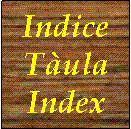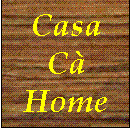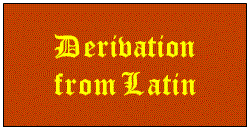


Notice to be read (in case you didn't)
Disappointment, crisis and renewal
A deep sense bore of bitter disappointment, that influenced some piedmontese poets, like Stephen Rocca, Claude Calandra, Caesar Scotta, etc. For example Claude Calandra, who was a deputy, wrote ironical verse on the italian ilness (e.g. "Stòria d'un stival") and on the decay' status of the Piedmont (e.g. "Lament ëd Giandoja"). Also the already mentioned Michael Fornelli, in the work "A Giandoja për ël sò ùltim sequestr" told: "... a l'é un gran che s'at lasso le bròche ant jë stivaj ..." (It will be already a lot if they will leave you the studs in your boots). The feeling of disappointment is accompained by a quick decay and a certain isolation of the Piedmonteses.
Science and technology found anyway a good ground in Piedmont, and at the end of the XIXth century bore in Turin the large industry. In this way the Piedmont took again an important role and became also training place for development of social ideas. In the factories, in offices, in laboratories, at University they continued to speak Piedmontese.
Piedmontese writings of the '900
The list of authors of the '900 is very long, as the one of relevant works. Since we have to face with the poor capacity of literary critics of the writer of these notes, the only alternative is to give a list necessarily shortened, and so not complete at all, of authors and works. The reader don't have to think that the choice is based on impotrance (the writer would not be able to do such a choice).
* Giovanni Gianotti collections of verse, e.g. Fërvaje dl’ànima.
* Oreste Gallina collections of verse, e.g. "Le freidolin-e", "Canta Pero", "Pare e fieul", and then some proses and the drama Tempesta.
* Arrigo Frusta (nickname for Augusto Ferraris) collections of verse and proses, e.g. "Ij sent ani dël cìrcol dj’artista", "Fassin-e ‘d sabia", "Faravòsche".
* Nino (Giovanni) Costa collections of verse, e.g. "Mamin-a", "Sal e Pèiver", "Brassabòsch", "Fruta Madura", "Ròba Nòstra", "Tempesta".
* Giuseppe Casalegno collections of verse, e.g. "Balossade dël vent", "Ecelensa ch'am përdon-a", the little poem "Ël progress", and other works for newspapers and magazines.
* Pinin Pacòt (Giuseppe Pacotto founded the association "Companìa dij Brandé" and the magazine "Ij brandé". In this enviromnent the piedmontese graphy was normalized. He wrote the books "Arsivòli", "Crosiere", "Speransa", "Gioventù", "Pòvra amia", "Sèira".
* Giovanni Bono twilight poet, wrote vese included into the collection Rime care, rime dosse.
* Armando Mottura composed verse in the books "Reuse rosse", "Paisagi ‘d Val Susa", "La patria cita", "E adess pòvr’òm". Among his comedies, the main are "E la roa a l’é ancantasse", "A peul sempe desse".
* Nino Autelli wrote in prose two books. "Pan ëd coa", "Masnà".
* Mario Albano poet of deep religiousness, published "Canto ‘dcò mi".
* Carlottina Rocco collections of verse. "An sla broa dël senté", "Seugn sensa pianà".
* Domenicp Badalini - "Listeurji dij varèj", "Doe minute për ti".
* Alfredino Nicola Founded the magazine "Musicalbrandé". Among their works the two books "Spers", "Arcordanse"
* Luigi Olivero Composed various poetry. His main works are in the publications "Poema dl’élica", "Roma andalusa", "Ij Faunèt", "Epicedium dij mè dódes gat mòrt", "Rondò dle masche".
* Umberto Luigi Ronco collections of verse, (year 1962). Novèmber violagiàun.
* Mariolina Passigli poetess of deep religiousness, collection of verse "Arlongh la stra".
* Barba Tòni Bodrié (nickname for Antonio Bodrero) wrote in Piedmontese and in Provençal. In Piedmontese, collection of verse "Val d’Inghildon", "Sust".
* Tavo Burat (nickname for Gustavo Buratti) he worked, with success, for recognition of the piedmontese language in the European Council. He wrote the two works "Prusse Mulinere", "Finagi ".
* Carlo Cocito wrote "Tra busson e rovej".
* Carlo Comino published "Cantoma", "Vijà 'd poesia dël 15 stèmber a Salusse" and other poetry on magazines and newspapers.
* Censin Pich (nickname for Vincenzo Pich) wrote many proses and published, with Dario Pasero "Sapèj - Pròse piemontèise". He takes care of the magazine "La Slòira - arvista piemontèisa".
* Bianca Donato works on prose and theater.
* Camillo Brero poet and researcher on Piedmontese published two Grammars and a Vocabulary. He writes books of poetry "Spluve", "Ma ‘l sol doman a ven", " A l’è torna l’alba", " An brass al sol", "Breviari 'd l'ànima" and in prose "Le fàule pì bele", "La bela stagion", and still other (e.g. he edits a magazine).
* And still many, many others.
Piedmontese theater of the '900
At the beginning of the century we remember two authors: Eugenio Nicola, and Giovanni Drovetti, who did important works. The first wrote, for example "Monsù Taboj" and the second "Lë scòpo", "La prima mëssa", "La lòdola", "Sui nòstri brich", "Ël curà 'd Ròca Brusà" and so on. Other authors continued to write comedies in Piedmontese (also nowadays), and among them we remember Armando Mottura with the comedies, already seen above, "E la roa a l’é ancantasse" in the year 1948, and "A peul sempe desse" in the year 1955.
In this century, the fascist period had a very bad influence on the piedmontese theater, since the superior order was "italianize". The greatest permission for local cultures was the use of the vocal inflexion characteristic of the region. As it happens in all the dictatorships, manifest or hidden, the culture must be the "official" one, and nothing else. In that period not only in Piedmont, the local culture and in general the Culture (the true one does not distinguish between the two) didn't have an easy life in Italy. The renewal, for the piedmontese theater started from the year 1950. In 1968 rose the Association of the Piedmontese Theater. Among the actors of the XXth century one of the most important is certainly Erminio Macario. Another celebrated name in the piedmontese theater is Carlo Artuffo.
Scientific prose in Piedmontese
The writer is a Physicist and he did the Researcher for all his working life (40 years and 13 weeks of contribution). Just in order to demonstrate that what asserted is not completely true, he wrote in Piedmontese a book of Physics, whose level is about the first two years of University, and it was quite happy with this work (not only from a linguistical point of view, but also from a physical point of view). This is the notes of "Fìsica sperimental - Mecànica clàssica" annexed to this web site.
As it is in all languages, a problem exist of neologisms, that in the technical field are derived from the language of workers in the specific field, while in scientific field the problem is common to all the languages: the neologism is often assigned by the first researcher who needs it. In Italian usually these are avoided, since an english word is used (sometimes an english name is directly assigned to italian discoveries). Also for neologisms, in Piedmontese, derivation rules (not absolute) exist which are the same that formed all the piedmontese words. Then there is the habit of people using them.
As a little example we report in the following the Foreward to the said Book.
An ste nòte i parloma ëd Fìsica Sperimental, con na cita introdussion matemàtica për avèj coj utiss che a servo a na dëscrission rigorosa dle còse che i voroma dì. La speransa a l'é che la pì part ëd chi a l'avrà veuja ëd lese ste pàgine a peussa capijne quaicòs e peussa tové quaicòs d'anteressant. Se sòn a càpita nen, passiensa. Ël but a l'é nen col ëd fé lession a quaidun. I stoma nen a definì cos a l'é an general la Fisica e cos a studia, e parej is la gavoma sensa tròpi pastiss. Disoma anvece che la Fisica Sperimental a l'ha ël but d'osservé ij fenòmeni e trové le legi che a-i guerno, scrite coma relassion matemàtiche tra le grandësse che a interven-o (e vëddroma peui lòn che a l'é na grandëssa fisica). Na sudivision che i-j soma abituà a assègna a la Fisica ij fenomeni andova a-i é nen trasformassion macroscòpica dla materia, mentre che a ciama Chimica l'ëstudi dë ste trasformassion. Già mach sì a-i saria da dëscute un bel péss. Ant la Fisica Sperimental ël metod, an sostansa, a l'é sempe col imaginà e dovrà da Galileo, che peui a vnirà, ani dòp, butà an manera rigorosa da Newton. As oserva un fenòmeno, as considero (ò ipotiso) le grandësse che a interven-o, as supon na lege che a jë gropa fra ëd lor, che a peussa esse scrivùa coma na relassion matematica. Sòn a veul dì fé un model matemàtich dël fenòmeno osservà. As organisa n'esperiment për arfé ël fenòmeno second ël model supòst, as misuro j'arzultà e as contròla se la lege pensà a corispond a lòn che as peul misuré. Na lege a venta che a sia formulà an termo quantitativ e nen mach qualitativ. Dle vire le ipòtesi che as fan për giustifichè fenòmeni complicà a son nen giuste e magara as sà già che a l'han nen vàire possibilità d'esse giuste, ma as deuvro për organisé ël travaj e as ciamo giusta "ipòtesi ëd travaj". J'esperiment che a në derivo a peulo dé informassion che a servo a s-ciairì le idèje. L'ansema dle ipòtesi fàite për giustifichè un fenòmeno ò na categoria ëd fenòmeni as ës-ciama na "teorìa". Na lege ò na teorìa a peulo esse verificà sperimentalment con misure che a deuvo esse ël pì possibil precise. An Fisica Sperimental a-i é nen un limit a la precision che as serca d'oten-e. Neuv esperiment che a ven-o fàit ò esperiment pì precis a peulo dëmostré che na lege ò teorìa a l'é nen giusta ò a l'é nen completa. Sòn a veul dì che ël model che i l'oma fàit a l'é da cambié ò completé. A l'é nen dit che sto modél a sia sens'àutr da campé via, përchè a peul esse dovrà fin-a andova a l'é verificà e cand, an pràtica, l'aprossimassion che a serv a l'é nen pì fin-a dl'imprecision dël model. Pr'esempi i podoma consideré ël model d'atom che a l'éra stàit ipotisà da Thomson ant ël 1901. A coj temp ël problema a l'era che as savìa, da vaire còse, che ant j'atom a-i son sempe d'eletron carià negativ, ma che l'atom a l'é nèutr da na mira eletrica. As tratava donca ëd capì andova a-i ero le carie positive che a neutralisavo j'eletron. L'ipòtesi ëd Thomson a l'era che l'atom a fussa coma na bija con diameter 10-8 cm a-peu-pré, con caria positiva e massa dëstribuìa e j'eletron andrinta coma le grumele dla fruta. Con sto model as peul vëdde che l'echilibri tra atrassion dla nivola positiva e repulsion dle carie negative tra ëd lor a fan an manera che j'eletron as pòrto su surfasse concèntriche. Ël model a giustificava lòn che as conossìa. Antant a l'éra stàita fàita l'ipòtesi dl'atom con nos sentral e j'eletron che a viravo antorna (ant ël 1904 Nagaoka, e peui Rutherford ant ël 1911). Për sto atom, però, a ventava trové na giustificassion al fàit che a iragiava nen energia coma a l'avrìo dovù fé, second la teoria classica, d'eletron che a viravo e che donca a sperimentavo n'acelerassion sentrìpeta. An dëspét ëd sòn vaire còse a sugerìo sto modél dla strutura ëd l'atom coma ël pì bon a dëscrivlo. N'esperiment ëd Geiger e Marsden (1908), fàit darera al consèj ëd Rutherford, e che a misurava con precision lòn che a capitava cand na particola alfa a traversava un sutil feuj ëd material, a l'ha përmëttù d'esclùde ël modél ëd Thomson, che a l'era nen compatibil con lòn che a l'éra stàit misurà. Se l'àtom a fussa stàit fàit second l'ipòtesi ëd Thomson, le partìcole alfa, carià positive, a l'avrìo dovù esse difùse ant un còno nen vaire largh e con na dàita intensità për ògni angol. Anvece as misuravo àngoj ëd deviassion motobin pì àut e fin-a particole che a tornavo andarera, cole che a rivavo motobin davsin a la nos sentral. J'arsultà dla misura fàita a cobiavo bin, anvece, con l'ipòtesi ëd Rutherford. Antlora a l'é tratasse ëd capì, se ël modél a andasìa bin per un vers, com a l'éra la question dl'energia che a vnisìa nen iradià da j'eletron. Ëdcò ant ësto cas a son stàite fàite vaire ipòtesi ëd modéj matematich che a giustifichèiso la situassion e d'esperiment për trové col giust. An efét a l'é trovasse che a và bin un modél che a supon livéj d'energia stàbij për j'eletron antorna a la nos e l'iragiament a corispond al passagi d'eletron da un livél a n'àutr. As peul dëmostré che l'ipòtesi djë stat stabij a l'è ëdcò compatibila con la teorìa classica a livél macroscòpich. Man man che le misure a dventavo pì precise, a càpitava ëd vëdde che ël model dovrà an col moment a l'era nen complét, coma cand a l'é dëscuvrìsse che la riga ëd lus giàuna d'emission dël sòdio a l'éra nen na riga sola ma doe righe davzin, e sòn mersì a l'utilisassion ëd n'ëstrument pì precis. Sòn a l'ha portà a la teoria dlë "spin" dj'eletron. Ancora adess a le n'asard dì che l'atom a l'é sens'àutr fàit parej coma i lo conossoma. Da un pont ëd vista rigoros i podoma giusta dì che l'atom as comporta an tut lòn che i l'oma podù vëdde e misuré, coma se a fussa fàit parej. A venta nen confonde ël model con la realtà, che da ràir a son l'istessa còsa. Le legi dla Fisica a peulo esse legi precise, rigorose, e antlora a càpita che pì la misura fàita për verifichéla a l'é precisa, pì la lege a l'é bin verificà; opura a peulo esse legi aprossimà, përchè ant ël model matemàtich a son stàite fàite d'aprossimassion. Ant ësto cas l'àuta precision ëd na misura a peul buté an ciair le diferense tra ël modél dovrà e la realtà che a ven misurà. N'esempi d'ëste legi a l'é la lege ëd Boyle, che a buta an relassion pression e volum ëd na dàita quantità ëd gas, che a l'é scrita ant l'ipòtesi che le molécole dël gas a peusso esse considerà coma ëd pont sensa un volum. Sòn a va bin për un dàit camp d'aplicassion e se la precision che as veul a l'é nen tròp àuta. Fòra ëd sòn la lege a dà risultà che a son nen vaire giust. Antlora a venta sostituìla con la lege ëd Van der Walls che a dëscriv l'istessa còsa ma che a consìdera ëdcò ël volum dle molécole. Ant la pì part dle aplicassion pràtiche, tutun la lege ëd Boyle a peul esse dovrà sensa avèj d'eror sensibij.
![]()


